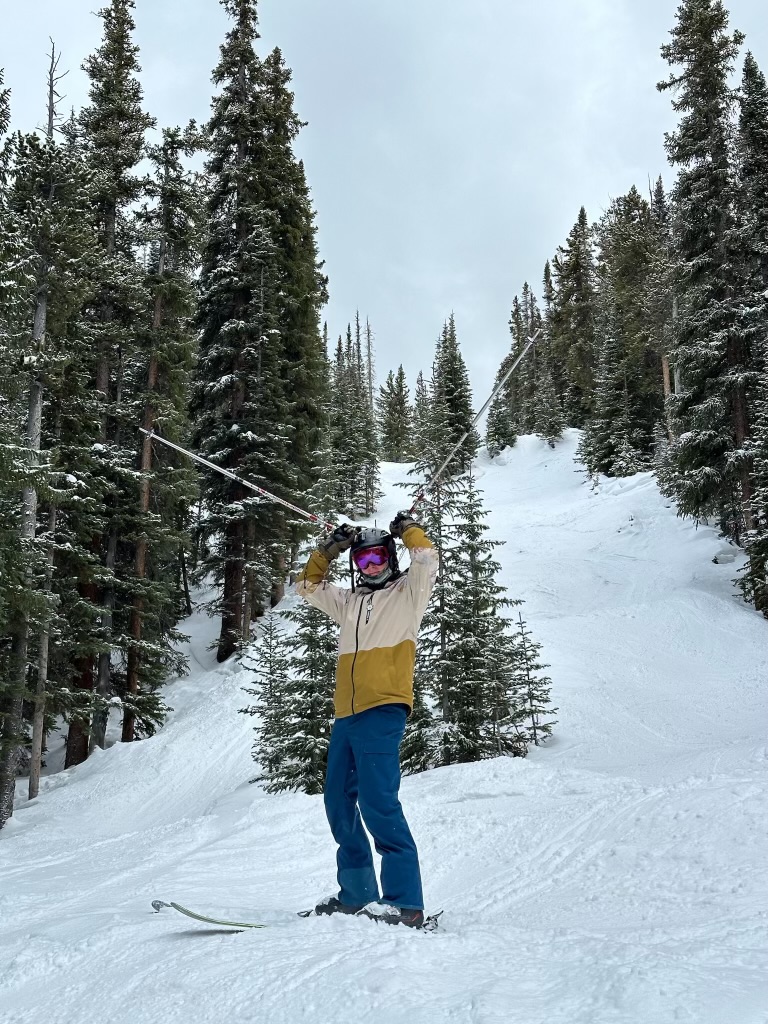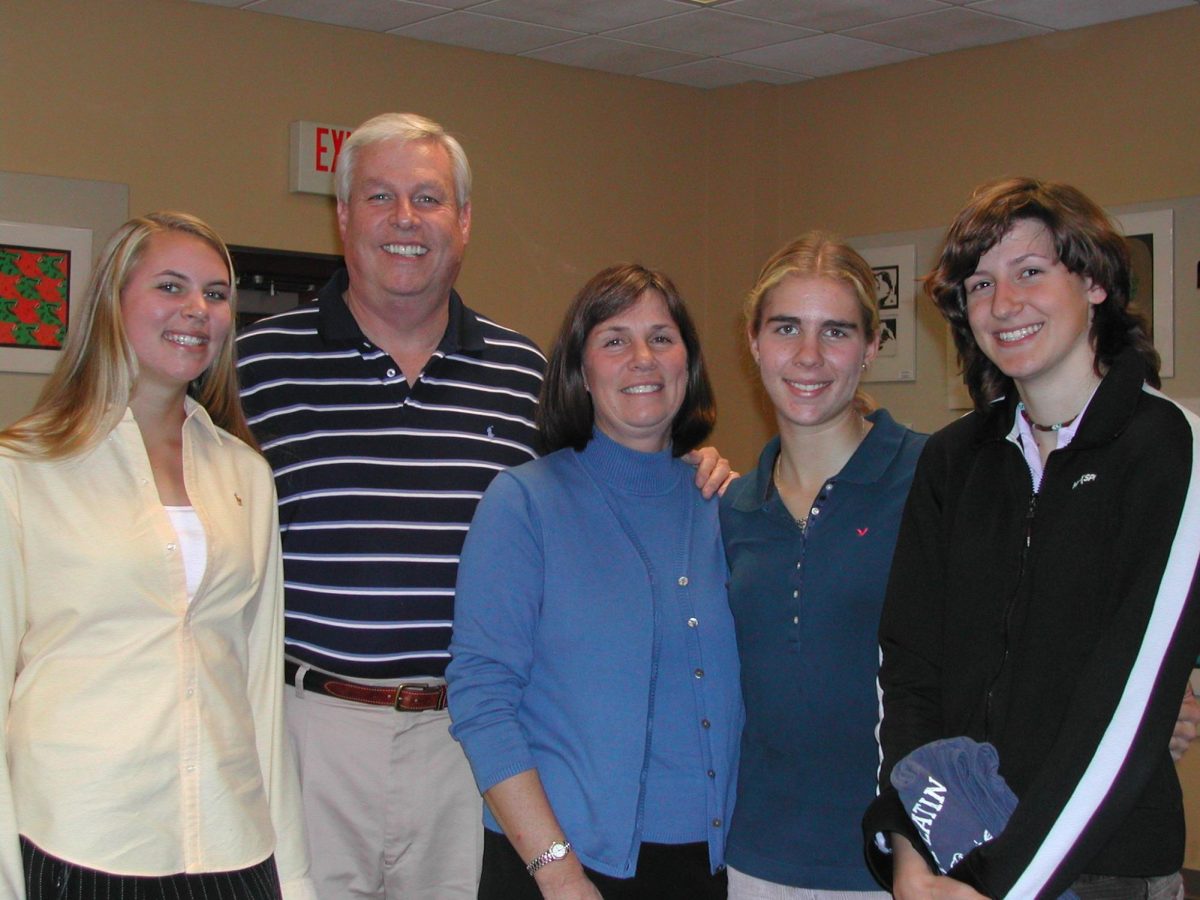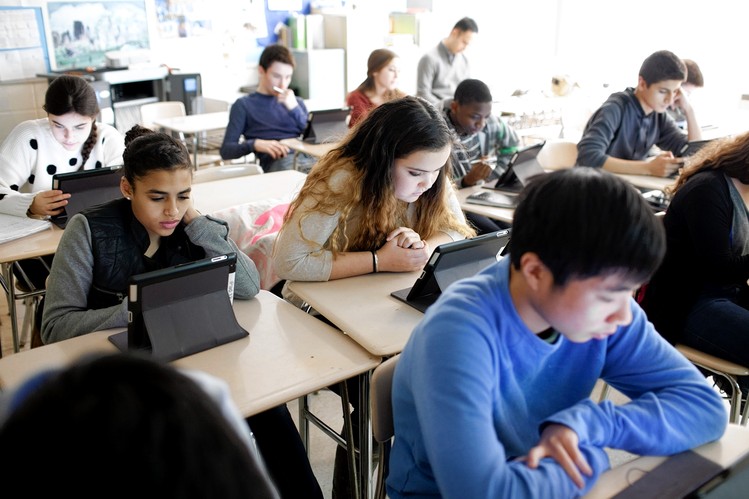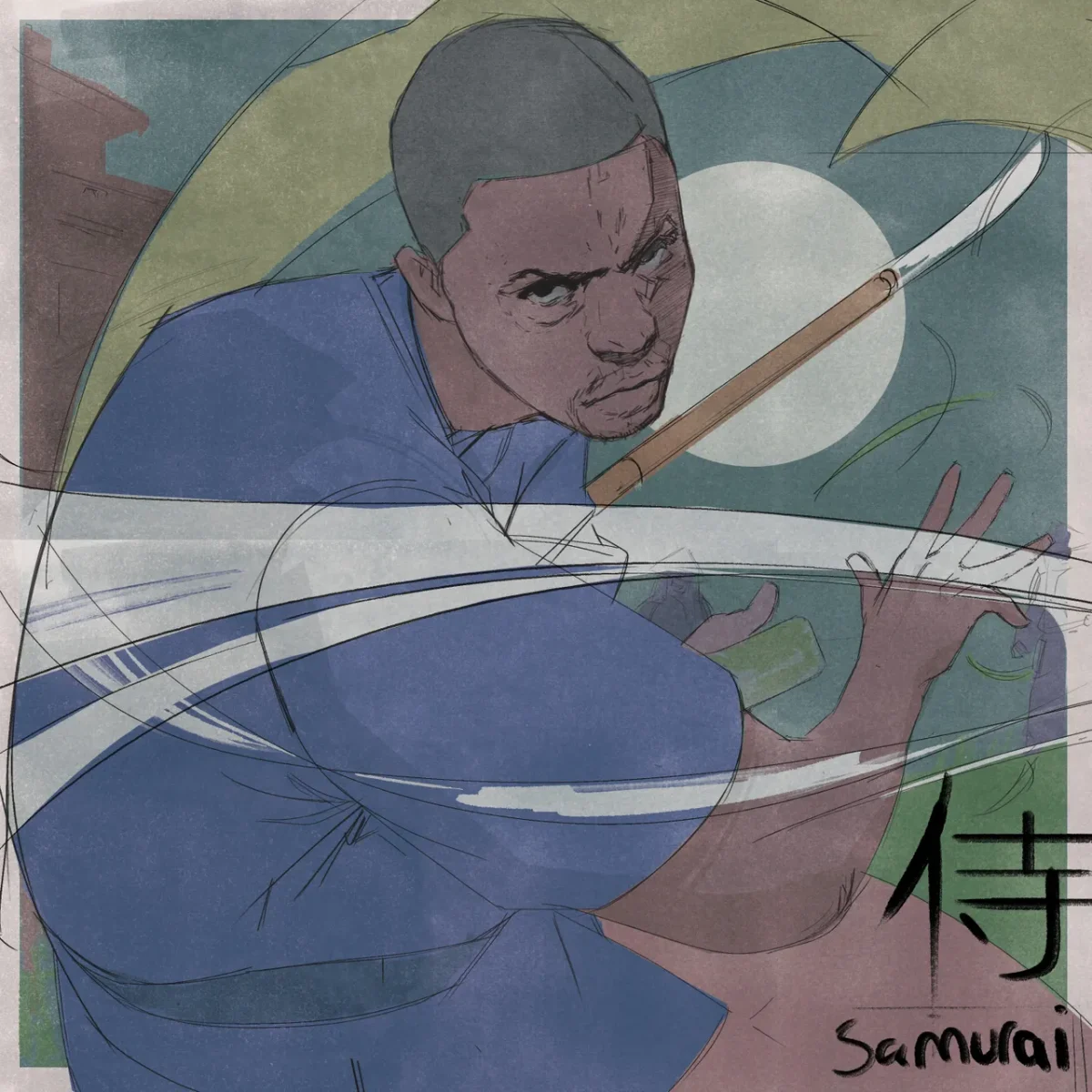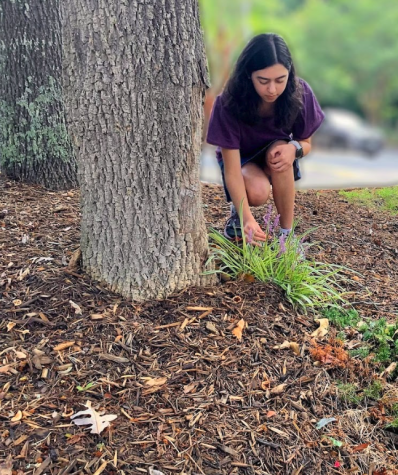No matter who or where someone is at any given moment, the threat of bad weather looms in the background. Hiding in the fluffy white costume of a cloud, at too extreme of a height to clearly discern, rain droplets and ice crystals wait to descend. While no place on Earth offers escape from inclement conditions, many steps can be taken to prepare for the most unexpected catastrophes. Unfortunately, Charlotte Latin School fails to shield its students from the most unpredictable atmospheric concoctions.
Despite the frequent occurrence of rain in Charlotte, Latin lacks the proper protection for any storm ranging from a dusting of water to a torrential shower. Because of the college campus setup of the school resulting from the addition of newer buildings, required classes for Upper Schoolers are held in a minimum of three different buildings that are not connected. Latin advertises its popular magazine, “Under the Covered Walkways”, but this title features the ancient, singular covered sidewalk from the Lower School to the cafeteria and library to the math buildings and finally, the gym. Spending time outside at Latin every day, Guillermo Yepes, Maintenance, observed the campus rain trends. Yepes said, “Puedes para ir al middle school, para el lower school, para el 500s y 300s. Los otros no son. No lo recomiendo. You can go to the middle school, to the lower school, to the five hundred and three hundred. The others, probably not. I don’t recommend it,” (translated by Upper School Spanish teacher, Hugo Caraballo).

Anyone who takes or teaches English, history, science, foreign language, music, art, or engineering faces a vulnerable trek under the rapidly changing sky. Kabir Nawaz ‘26 said, “I think much of the campus is set up well for walking between buildings in the rain, but there are a few exceptions. Traveling to and from the Inlustrate Orbem building on a rainy day is a considerable nuisance due to the lack of any covered walkways between it and the rest of the campus. Also, there is theoretically a covered path to the SAT building alongside the Belk Gym, but the adjacent door is often locked from the outside, resulting in an inconvenient travel path under the rain to access the main doors.” Many students share this experience. Clark Fan ‘27 said, “The two areas I visit the most, between Thies Auditorium and IO and from IO to in front of the SAC, are quite a struggle when trying to get between classes. If it is raining, I am usually pretty wet before there. Also, the walk from the library to the Thies entrance that is facing the library is vulnerable to rain.”
Even if speeding between classes, which could result in fatalities, no fast (or slow) dry route exists. For students, carrying an umbrella is not feasible because of the lack of storage space and the hazard of carrying dripping gear down the hallways and ultimately laying it in its own puddle on the classroom floor. Moreover, a day in Charlotte often consists of a cool, clear day followed by an intense downpour ending in a hot, cloudless sky, none of which the forecast predicts. The school cannot depend on people to know what kind of weather to expect each day, so a permanent solution is indispensable. Many students affirmed that they show up to classes drenched whenever it is raining. Jack Donnelly ‘24 said, “The older buildings around the Middle School, Founders Hall, and the quad are pretty well set up with walkways. The IO building is detached—there’s no covering. It’s not bad if it’s not raining too much but if I’m carrying my computer and it’s pouring rain out it’s a bit of a problem, especially because it gets bottlenecked at the two doors in between classes.” When asked whether or not the campus is accessible during the rain, Pam Sweer, Director of Upper School Band, said, “Not really. There should be covered walkways available. They may not be the quickest route to a building, but it should be an option.”

Never mind the parking lots: sophomores and juniors might as well avoid showering the morning the forecast alerts to moisture, as nature will take care of that for them. Lukas Haase ‘25 said, “The walk from somewhere such as the junior or sophomore lot seems like you have no choice but to be drenched.” Agreeing with this statement, Clayton Han ‘26 said, “As a sophomore I come from the furthest parking spot away from the main buildings, and the whole walk is out in the open. There aren’t any covers so you get soaked if it rains.” Since much of this walk includes designated sidewalks, the room definitely exists for a cover overtop.
This issue has not been ignored or unnoticed by the school, but it falls to the bottom of the list of interests. When asked why Latin has not added additional walkways to accommodate the campus’ expansion, Rob McArthur, Chief Financial and Operations Officer, said, “We have considered adding walkways, but we have other higher priority projects that we need to address given our limited funds. As we look at new building projects we do consider the funding and the feasibility of adding walkways. In some cases it is just not feasible to add walkways such as to parking lots.”
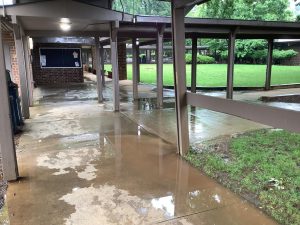
Besides the discomfort caused by soaking in wet clothes, skin, and hair, Latin’s campus poses a danger to all who step foot on its grounds. Behind the scenes, the worshiped Covered Walkway is drowning. One of many to comment on this specific issue, Hannah Rankin ‘28 said, “Sometimes when it rains a lot the walkways get flooded, especially near the cafeteria. If you have to go around the flooding then you will get wet by the rain.” To tell the truth, the “cover” displayed acts as a facade. Between the Belk Gym and the SAT building, a massive section of the building’s overhead cover dumps water onto the path with the strength of a waterfall, and the path does not extend around this patch. Lucy Caddell ‘30 said, “I feel it could be set up a little bit better because even under the walkways, I get wet from the rain dripping so fast down the side.” The exposed areas of campus receive even worse attention. Hugo Caraballo, Upper School Spanish teacher, said, “It’s very sad. I have seen several students fall when it’s raining. It can be dangerous to walk around campus. It frightens me a lot. I don’t feel safe coming and going when the weather is not favorable.” A personal witness to one specific tragedy, Ellie Hodge ‘30 told her story. “There are many puddles and cracks every few feet which can be unsafe. For example, my friend once tripped and fell and ended up breaking his arm,” Hodge said.
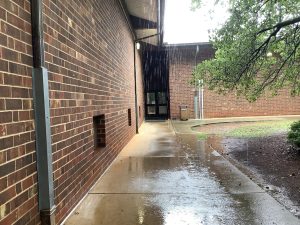
As infrequent as they may be, ice days still hit Charlotte every few years. A member of the grounds maintenance team who helps make our campus look beautiful, Yepes said, “No está preparado para el hielo. It’s not prepared for the ice,” (translated by Hugo Caraballo). Lori Davis, Director of Student Publications, has lived through many Latin ice days over the years. “For the most part, sidewalks are cleared. It’s the hilly areas I have sometimes found treacherous when it’s icy—it’s hard to keep them totally safe since we have so many trees that keep them shady,” Davis said. Although not every student has witnessed an ice day on campus, those who have will never forget it. Kristie Shams ‘24 explained her experience with ice days at Latin after moving from the northern region of the US. “Since I’m originally from Ohio, I’ve gotten my fair share of snow and ice growing up, having weeklong snow-day sprees as a result of the chilly weather. However, after coming to North Carolina, all that snow and ice seemed to disappear. Despite the lack of snow, there would be times where ice would creep onto the campus. From short glides to small little chunks of shuffling, I would find any and all patches of ice on campus (most notably by the stairs of the PAC). There’s obviously danger hazards. For example, since I sit near the IO patio for activity period, I could just go outside and find some good ice,” Shams said. Our own students have been injured from attending school on ice days due to an absence of salt on the roads and brick stairs. Haase said, “I did have a friend slip and fall down the Thies stairs from ice a year or two back and had to go to physical therapy to recover.”
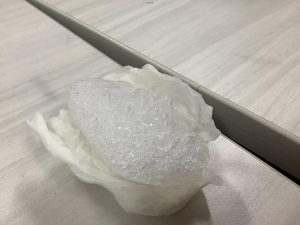
Though weather may inhibit most of us for a few days at a time, some individuals face difficulties navigating campus on a daily basis. Those dealing with a physical impediment, whether temporary or permanent, fail to find easy routes to buildings and the parking lots. Having had many students over her time at Latin, Davis has watched her beloved students struggle on the way to class. “Going up and down the hilly areas is problematic. I’ve had students who were on crutches who really struggled with this situation, especially since the only way to access my classroom is by going up a hill (either next to IO or the opposite the PAC’s theater entrance). Ideally, since our school has grown so much, there might be a need for some kind of way to help transport students and faculty who cannot get around campus. Even if it’s a modified golf cart in lieu of a trolley or bus that moves throughout campus at scheduled times, it would help people who are on crutches or those with limited mobility issues. I cannot imagine anyone with a wheelchair would be able to get around easily.”
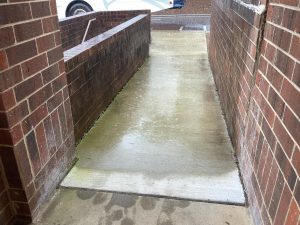
Both students and teachers have worked through various injuries, but our campus delays recovery. Elizabeth Wolff ‘27 said, “Honestly it’s pretty bad. I was on crutches for about a week until I stopped using them at school a week earlier than I should have because the stairs and distance made it difficult to get places easily.” While some teachers may allow for exceptions in special circumstances, alternate routes should exist that people can traverse with ease to avoid missing class time. Caddell said, “My brother tore his ACL two years ago, and he said it was really hard getting around in the crutches because all the walkways get super crowded.” This struggle seems to be a shared pain. Leila Griffin ‘30 said, “I would say not very manageable because there are mainly only steps to get to places, and when one of my friends had crutches when she hurt her foot, she was struggling to get to her elective classes and back.”
Even teachers who have less destinations than students feel that the difficulty level is too high. Sweer said, “I was on crutches for 3 months and currently there are times when I need to use a cane. To avoid stairs/steps I had to go the longest way possible from one location to another location. For example, look at the ‘ramp’ from the parking lot to the front of Thies. I sometimes referred to it as a meditation maze. The campus is very unfriendly to anyone with mobility issues. I cannot imagine how someone in a wheelchair would feel seen and welcome.” Picturing the layout of the buildings on campus, Tyler Horiuchi ‘24, said, “I can imagine the heavy doors and many stairs would be an issue for someone less able-bodied.” While most buildings do have elevators, the small size adds an extra hardship to people trying to enter with crutches or a wheelchair. Camille Becker ‘25 said, “The elevators are useful, but the IO building is designed in a way that makes it hard to exit for people using crutches or scooters.”
For a school that values community above almost all else, Latin’s campus is the barrier that divides everyone. Besides rain and ice days, students and teachers need proper seating areas that are unaffected by freezing or scalding temperatures, extreme winds, or coatings of pollen. Right now, the designated lunch spots for Upper Schoolers include the cafeteria, the quad, and the Beak for seniors only. Sophia Cartafalsa ‘24 said, “Many students sit in the cafeteria, and there is not enough space for everyone. We are not allowed to sit in the classrooms unless there is a teacher in the room.” This is just the experience of a typical school day, but when bad weather strikes, the situation becomes dire. Lavender McIntosh ‘27 said, “I typically like to sit in the cafeteria, sometimes in the Gazebo, but I feel like there isn’t always enough room for students in the cafeteria on a rainy day. It can get crowded at times.” If classrooms and the fishbowls are off limits, then where do students go once the seats fill up? Wolff testified to the overlooked, ugly reality. “There are not nearly enough lunch spots. My group sits outside and often waits to go to lunch so the lack of seating has literally left us eating on the floor before,” Wolff said. How does $30,000 of tuition pay for students to eat on the floor?
Beyond places to eat lunch, there is an overall emptiness of seating areas for people to enjoy each other’s company where talking is permitted. Caraballo said, “The school has not created really good spaces for students to socialize or eat or have a sense of community. When they built this building [the IO], that is the thing they omitted. They failed to think about the students.” Having more students than the school can fit means that Upper Schoolers are split into two lunch times, so not everyone can visit with their friends during their free time. Davis said, “We need a dining hall that can accommodate our entire community at one time—then regardless of scheduling or weather, we would never need to worry about where people can gather or eat or how to schedule a meeting.” Robin Siczek, Chair of Upper School English, reflected on ways to bring her classes together and change up the class environment. “I would like to see more outdoor classroom space and group meeting spaces,” Siczek said.
Until Latin starts putting our students above its appearance, students will sink in the sludge of murky weather. Our students cannot focus on excelling academically in soggy conditions, so we must lift the curtain of dampness and allow them to finally breathe.




